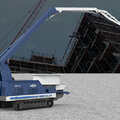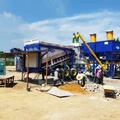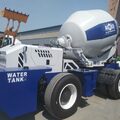Concrete paving machines play a critical role in the construction industry, particularly for road building, airport runways, and large-scale infrastructure projects. As technology continues to evolve and environmental pressures grow, the concrete paving industry is undergoing significant changes. In 2025 and beyond, a range of trends is expected to shape the design, functionality, and efficiency of these machines. This article explores the key trends that will define the future of concrete paving machinery.
1. Advancements in Automation and Robotics
One of the most significant trends in the concrete paving machine industry is the increasing adoption of automation and robotics. With rising labor costs and a shortage of skilled workers, there is a growing demand for automated systems that can reduce human intervention, improve precision, and speed up operations.
In the next few years, paving machines will incorporate more autonomous features, such as automated steering and elevation adjustments. Robotics will play a crucial role in areas like curb setting, material placement, and quality control. These technologies can streamline operations, reduce errors, and deliver higher-quality results while enhancing worker safety. Moreover, automated systems can work around the clock, providing more efficient project timelines.
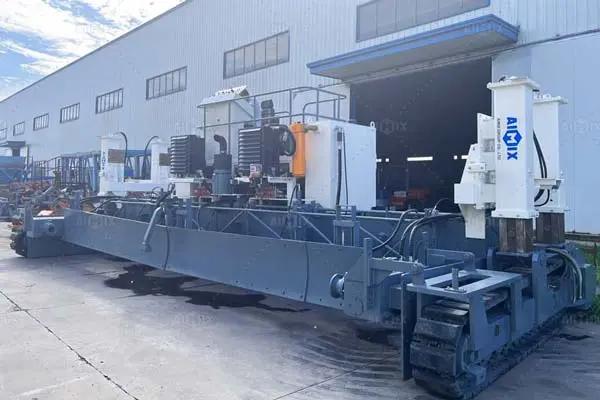
2. Integration of IoT and Real-Time Data Monitoring
The Internet of Things (IoT) is becoming increasingly prevalent in construction equipment, and concrete paving machines are no exception. By embedding sensors and connectivity into these machines, manufacturers can gather and analyze real-time data on a machine’s performance, environmental conditions, and the quality of the paved concrete. This integration can provide contractors with actionable insights into machine health, fuel consumption, and paving quality.
In the future, IoT-enabled concrete paving machines will feature predictive maintenance capabilities, alerting operators to potential issues before they become major problems. Real-time data can also optimize the paving process, enabling dynamic adjustments to mix designs or machine settings for the best possible outcome. The continuous stream of data from paving machines can improve operational efficiency, reduce downtime, and extend the life of the equipment.
3. Sustainability and Eco-friendly Features
As the construction industry faces growing pressure to reduce its environmental footprint, paving machine manufacturers are incorporating sustainable practices into their products. Concrete production itself is responsible for a significant amount of carbon emissions, and the paving industry is no exception.
Manufacturers are increasingly developing machines that utilize environmentally friendly technologies, such as fuel-efficient engines and electric-powered options. Some paving machines are now designed to use warm-mix asphalt, which reduces the energy required for paving. There is also a push towards using recycled materials in concrete, and paving machines that can handle these materials are becoming more popular.
Additionally, paving machines are becoming more energy-efficient, consuming less fuel and producing fewer emissions. This is particularly important as regulations around environmental standards continue to tighten. The introduction of electric-powered paving machines, while still in its infancy, will likely gain more traction in the coming years, helping to meet sustainability targets.
4. Smarter Machine Control Systems
Machine control technology is another area where innovation is driving change. Smarter systems will enable operators to achieve greater precision and efficiency in their work. Paving machines equipped with advanced GPS and 3D machine control systems will be able to automatically adjust the machine’s height, angle, and direction to ensure precise, consistent paving quality.
These systems can also incorporate data on road design, topography, and materials, enabling the machine to adjust in real time for the best possible outcome. For example, a smart system might adjust the concrete thickness depending on the wear patterns or traffic load predictions, ensuring that the pavement performs optimally over time.
Machine control systems are also making paving equipment easier to operate. With simplified interfaces and automated adjustments, even less experienced operators can achieve high-quality results. As these systems continue to advance, paving machines will become more intuitive, user-friendly, and efficient.
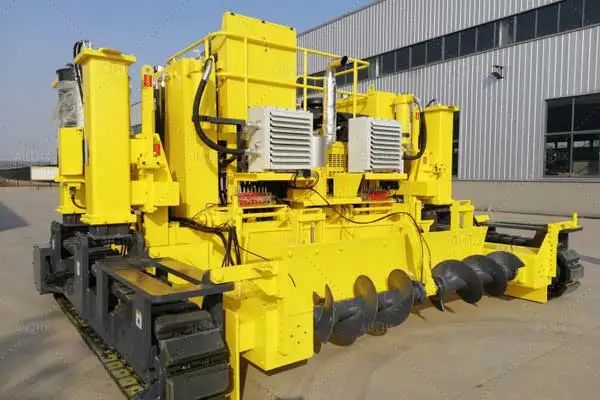
5. Modular and Scalable Designs
With the growing diversity of projects, from urban streets to large highways, there is a demand for versatile and scalable concrete paving machines. Modular designs allow contractors to customize equipment based on project requirements. By using different attachments or components, paving machines can be adapted for specific tasks such as curbing, shoulder construction, or complex geometric paving patterns.
In addition, modular designs make it easier for companies to maintain and upgrade their machines, rather than purchasing entirely new equipment. This trend toward modularity will help companies reduce costs and improve machine longevity, as they can simply replace or upgrade individual components rather than the whole machine.
6. Improved Safety Features
Safety on construction sites remains a top priority, and paving machines are being equipped with advanced safety features to protect operators and ground workers. These machines will increasingly come with safety technologies such as collision avoidance systems, real-time video surveillance, and proximity sensors to detect obstacles and personnel.
Additionally, operator cabins are being designed with enhanced ergonomics and protective features to ensure maximum comfort and safety. Better visibility, automated hazard detection, and enhanced seat design will help reduce the risk of accidents and ensure that operators can work for longer periods with minimal strain.
7. Collaboration with Drones and Aerial Mapping Technologies
A growing trend is the integration of drones and aerial mapping technologies with concrete paving machines. Drones can provide aerial views of construction sites, collecting data on road conditions, progress, and material usage. This data can then be used to inform paving machine settings, helping to improve the quality and accuracy of the work.
In the future, this collaboration will become even more seamless. Paving machines could be directly controlled using data from drones or even make autonomous adjustments based on real-time aerial data. The combination of drone technology and advanced machine control will enable contractors to monitor construction projects more effectively and ensure quality assurance at every stage.
You can choose a reliable manufacturer like Aimix to get a high-quality paving machine to meet your contrcution needs. You can know more details about the products by contacting the company.
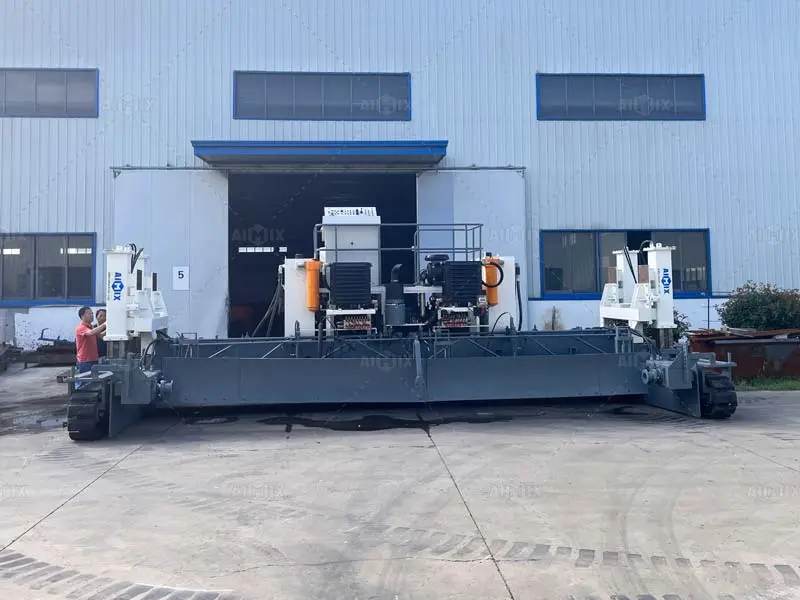
Conclusion
Concrete paving machines are poised for significant advancements in the coming years. From increased automation and smarter controls to greener technologies and enhanced safety features, the future of concrete paving will be shaped by a combination of technological innovations and environmental imperatives. As the construction industry faces ever-evolving challenges, paving equipment will continue to adapt, offering higher efficiency, sustainability, and precision. By embracing these trends, paving contractors can look forward to improved productivity, reduced costs, and more sustainable infrastructure development for years to come.

